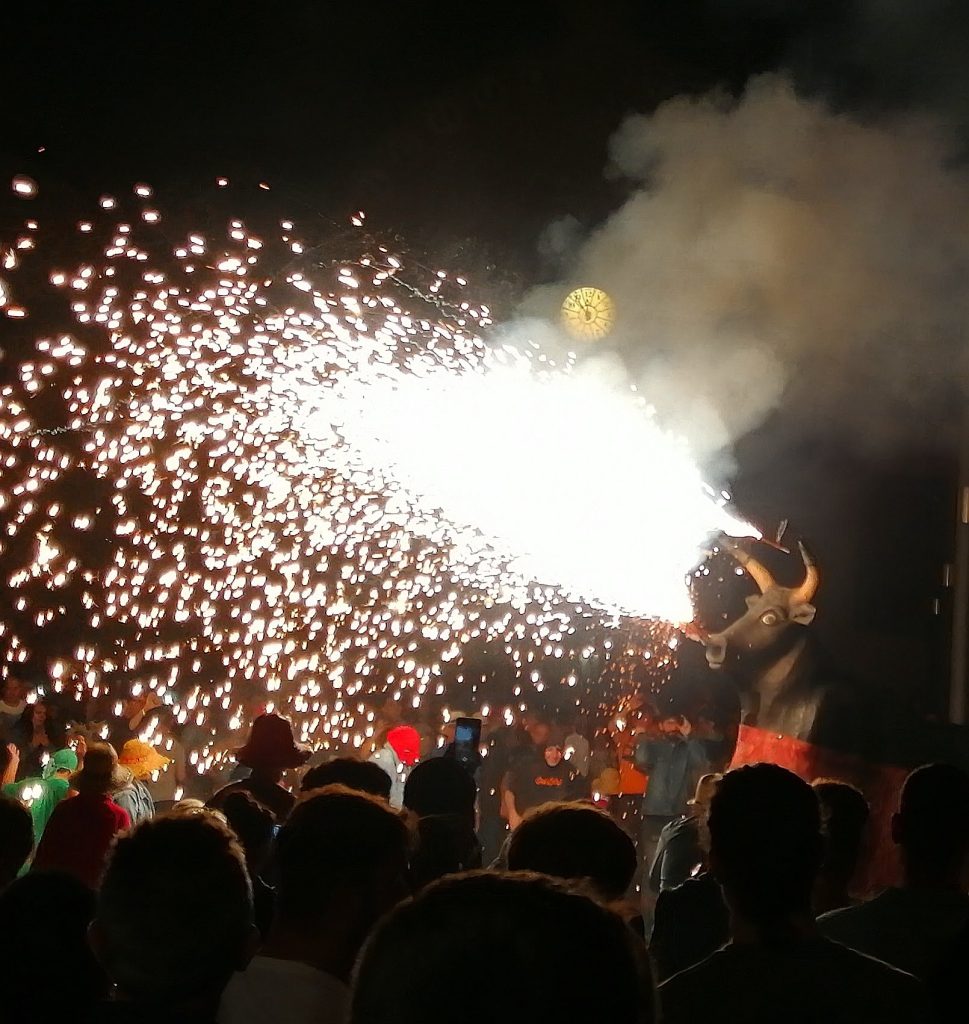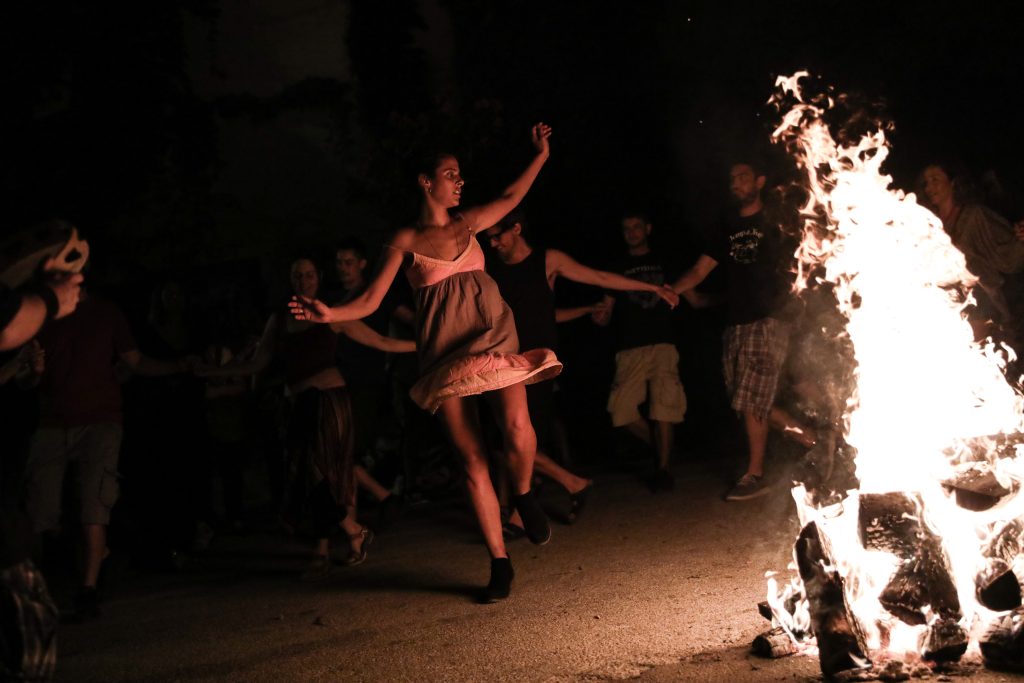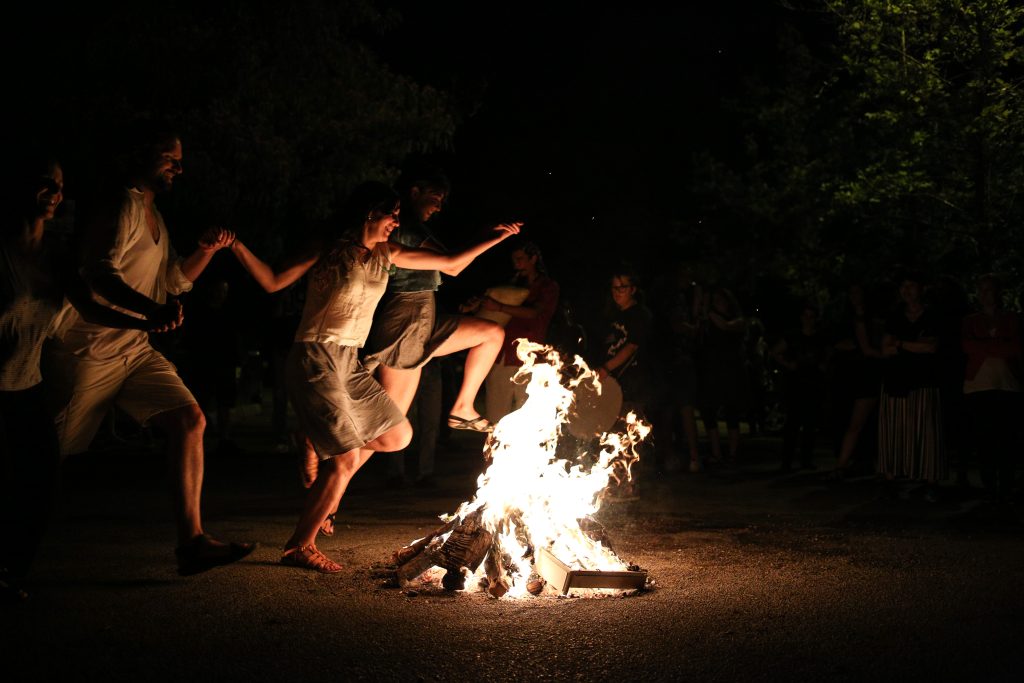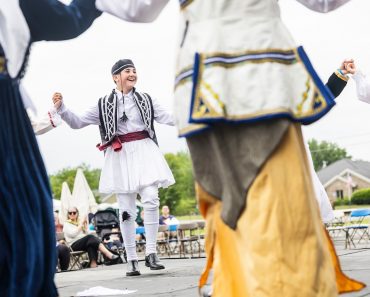Living in Barcelona for over four years, the night of June 23rd—the Eve of Saint John the Baptist—has always carried a fiery, festive charge. In Catalonia, this night is synonymous with verbenas, fireworks, beach bonfires, and all-night dancing. It marks the unofficial arrival of summer with passion and noise, a beloved ritual for locals and visitors alike.

The “Revetlla de Sant Joan”, also known as Saint John’s Eve, is a vibrant Catalan festival celebrated on the night of June 23rd, marking the arrival of summer with bonfires. fireworks, and the sharing of “coca de Sant Joan”
But last year, I experienced the same date in a very different corner of the Mediterranean. June 23rd found me on Amorgos, a serene Cycladic island in the Aegean. With the summer crowds still weeks away, the island had a tranquil magic of its own—and that night, I stumbled upon a celebration that was ancient, raw, and deeply rooted in Greek folklore: the festival of Klidonas.

The traditional custom of Klidonas at Kaisariani, in Athens, June 26, 2020.
A Living Tradition in Chora
In the main square of Chora, Amorgos’ postcard-perfect hilltop town, the atmosphere was charged. Not with fireworks, but with the pulse of community and tradition. Schoolchildren, free for the summer, greeted their teachers with excitement. Neighbors from across the island’s villages filled the white plastic tables lining the square. Live traditional music echoed through the alleyways as people of all ages danced together in a great circle. Souvlaki was grilled on communal barbecues, while local sweets were proudly displayed on makeshift stalls. The highlight of the evening? A village lottery—where the names of the winners were met with laughter and cheers.
It was a celebration untouched by tourism, a slice of authentic Greek island life, and the perfect way to experience Klidonas, a ritual many Greeks themselves only vaguely know by name.

The traditional custom of Klidonas at Kaisariani, in Athens, on June 23, 2018.
Klidonas: Fire and Divination
Klidonas (Κλήδονας) is a centuries-old custom celebrated on June 24, deeply embedded in Greek folk tradition. The word derives from the ancient Greek klēdon, meaning omen or prophetic sound. According to the custom, young unmarried girls could receive signs about their future husband through a symbolic and semi-magical ceremony—part divination, part communal festivity.
In villages across Greece, the ritual begins on the morning of June 24th. Unmarried girls set out silently to collect “silent water” (amílito neró) from a spring or well—so named because the water must be fetched without uttering a word. Each girl carries a ceramic pot, into which she will later place a personal item that represents her—such as a ring, pendant, thimble, or even a marked fruit. These symbolic tokens, known as rizikária or klidoniká, are believed to reveal the identity or fate of a future spouse.
The container is then locked, often by an older woman called the “rizikárousa”, who recites a traditional verse:
We lock the Klidonas / with Saint John’s grace / and may the girl with good fate / receive what she desires.
The jar is covered with a red cloth and crowned with laurel, myrtle, or other sacred branches. That evening, during a public gathering, each item is removed from the jar in turn, accompanied by rhyming couplets—often humorous or teasing—that supposedly hint at the fate of the item’s owner. The girl recognizes her item and tries to decipher the message, interpreting the rhyme as a glimpse into her romantic future.
But the magic doesn’t end there. As a final act, each girl takes a sip of the “silent water” and walks through the village without speaking. The first male name she overhears is believed to be that of her future husband.
Fire, Purification, and Courage
Alongside the divination ritual, another key element of Klidonas is fire. On the eve of June 24, large bonfires are lit in village squares or even in the streets. Children—and often adults too—leap over the flames, shouting:
“Let me jump the fire / so sickness won’t catch me!”

The traditional custom of Klidonas at Kaisariani, in Athens, on June 23, 2018. / Το έθιμο του Κλήδονα στην Καισαριανή, στην Αθήνα, 23 Ιουνίου, 2018.
Fire is seen as a cleansing force, burning away evil and misfortune. The higher the leap, the bolder the youth. The ritual is part dare, part exorcism, and entirely exhilarating.
An Echo of the Ancients
Though today Klidonas is associated with Saint John, its roots are undeniably pre-Christian. Folklorists and historians draw direct links between Klidonas and ancient Greek rites of passage and fertility rituals. Greek ethnographer Dimitrios Loukatos referred to Klidonas as “one of the most ritualistic festivals of our calendar.”
One particularly compelling connection is with the Arrephoria—a secretive Athenian ceremony held in honor of Aphrodite, the goddess of love and fertility. On a moonlit summer night, two young girls, the Arrephoroi, would carry hidden objects in covered baskets from the Acropolis to the sanctuary of Aphrodite. The ritual’s precise meaning was deliberately concealed; its power lay in secrecy.
Author and historian Artemis Skoumbourdi notes the seasonal and thematic parallels between these two rites—feminine mystery, love, symbols, and transformation under the summer moonlight—suggesting Klidonas is not just a folk custom, but a living echo of the ancient world.
Sources consulted for this article include Wikipedia, News Amorgos, and Michani tou Chronou.





